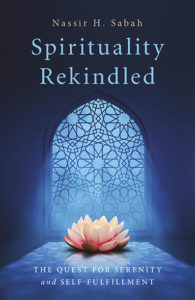Nassir H. Sabah
I used to be perplexed by the Quranic verse: “And of all things We created pairs, so that you may be mindful.” (Q51:49). The two preceding verses talk about the heavens and Earth, so I understand “all things” to refer to all material entities both living and non-living. But how can there be pairs of all these things?
If “pairs” refers to gender, then it is restricted to living things. Even then, this is not invariably the case. Although some trees are dioecious, that is, they have distinct male and female individuals, as in the case of ginkgo, holly, or willow, the vast majority of trees are not. There are certainly no male and female bacteria. So, even if restricted to the gender of living things, the statement is not universally true.
If “pairs” refers to “opposites” in general, then with some imagination one can think of pairs like mountains and depressions, or islands and lakes. Some things obviously do not have opposites, such as clouds or soil, unless one considers “existence” and “nonexistence” as pairs, which is a bit of a stretch, to say the least.
So, the statement “of all things We have created pairs” is on the face of it, not universally true. Now, if the Quran is of human origin, then why should the human author make such a sweeping statement that is manifestly untrue and therefore jeopardizes the credibility of the message? And if the Quran is a revelation of God Almighty, who is omniscient (all-knowing) and infallible, as I firmly believe, then what does it mean? The verse says it should make one mindful and reflect on the matter, so there must be more to it than meets the eye.
Then it dawned on me!
If “pairs” refers to all things, then it must be referring to the constituents of all things, that is, to atoms and subatomic particles. Here, there are indeed pairs, namely, as matter and antimatter!
The modern theory of antimatter began with Paul Dirac, who predicted in the late 1920s and early 1930s, based on quantum-theoretical considerations, the existence of antielectrons that are identical to electrons except for having a positive charge. These were discovered shortly afterwards and named positrons. They are now the basis of many important applications, as in PET (positron emission tomography) imaging.
The antiproton was produced in 1955 by bombarding copper with high-energy protons and was later found to occur naturally in the Van Allen radiation belt surrounding our planet Earth. The antineutron was produced in 1956 by proton-antiproton collisions. Protons and neutrons are composed of quarks, and antiquarks have been discovered. It is now well established that antimatter occurs in natural processes like cosmic ray collisions and some types of radioactive decay.
When a particle of matter collides with its antimatter pair, they annihilate one another, resulting in a burst of energy, neutrinos, or less massive particle-antiparticle pairs.
The atoms of all elements are composed of electrons, protons, and neutrons (except for the naturally-abundant form of hydrogen, which does not have neutrons). The existence of positrons, antiprotons, and antineutrons promises the artificial creation of anti-atoms of various elements, antimolecules, and even anti-substances of various types. In September 2023, it was announced that a stable antihydrogen atom was successfully created, controlled, and manipulated, after many years of work, to show that antihydrogen was affected by gravity in the same way as normal hydrogen.
For me, “of all things We have created pairs” refers to the existence of matter and antimatter and is indeed a true and verified statement, at least at the level of the constituents of all things. At another level, one can speculate that there might be antimatter out there in the vast unknown, in some form or other, in our universe or in other universes, or even whole universes of antimatter. Who knows for certain at present, other than God Almighty?
